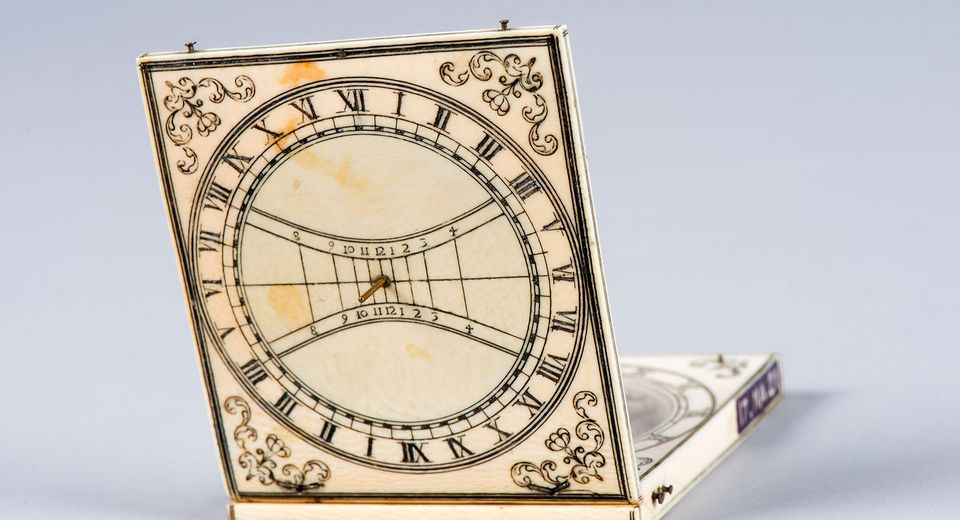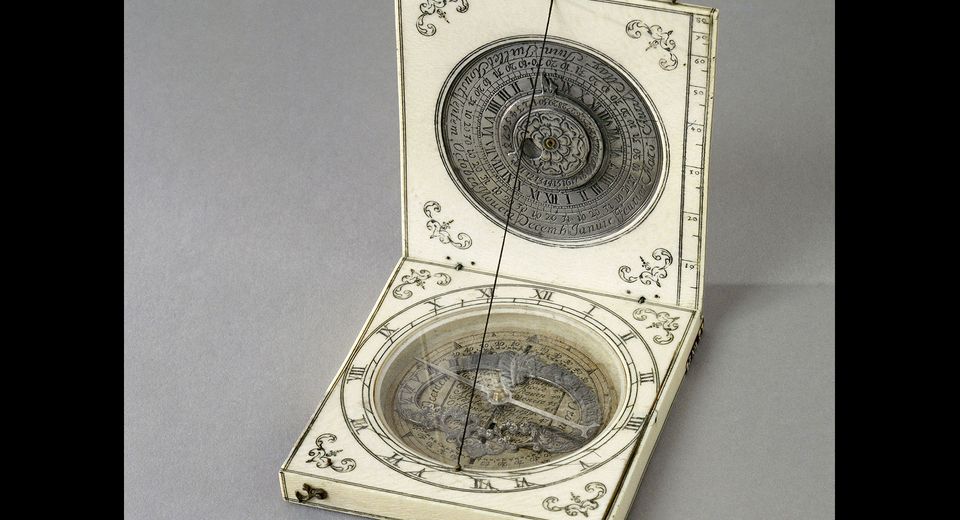Sundial from Dieppe
Port-Louis
Made of ivory in Dieppe with the greatest finesse, this navigation instrument includes a compass and several dials.
Description
This sundial was manufactured around 1670 and is one of many produced in Dieppe between 1660 and 1685. The city was involved in large-scale ivory trading with Guinea at the time and provided work for at least a dozen ivory craftsmen’s workshops.
What is special about the Dieppe sundial is that it includes a magnetic azimuth dial around the meridional orientation compass, on which the time is shown by means of a shadow. There is a perpetual calendar on the back, showing Sundays along with the latitudes of 24 major cities.
The National Maritime Museum possesses five Dieppe sundials. They are all manufactured on the same model and measure between 6 and 8 cm on each side. Meticulously created in ivory, they are decorated with tin, silver and brass inlays.
This navigation instrument, which includes a compass, is known as a diptych sundial: when opened, it displays two dials, one horizontal and the other vertical.
The compass enabled its owner to orientate himself as well as to read the time, thanks to the shadow cast by its needle (which here takes the form of an oblique wire).
Ivory, a remarkable material
From Antiquity onwards, ivory was sought after for its whiteness, durability and exoticism. The first ivory craftsmen set up shop in Dieppe in the 15th century, working mainly with elephant tusks but also using narwhal, cachalot and hippopotamus teeth.
Apart from a few large-scale works, most production focused on small-sized items commissioned by local high society: jars, statuettes, medallions, fans and so on…
Dieppe was a major fishing port in the Middle Ages (the city supplied Paris with fish) and became involved in long-distance trade in the 15th century. It was a port of departure for Canada, French Guiana, Reunion Island and the Antilles. Consequently, the manufacture of navigation instruments complemented its other activities, all the more so when a well-known cartography school opened its doors in Dieppe in the 16th century.
Collection highlight
The essential works to see during your visit to the Musée national de la Marine in Brest, Port-Louis, Rochefort, Toulon, and soon in Paris.


